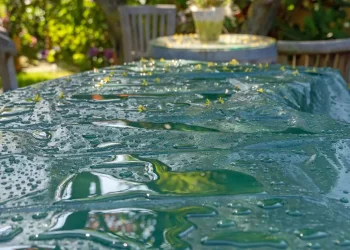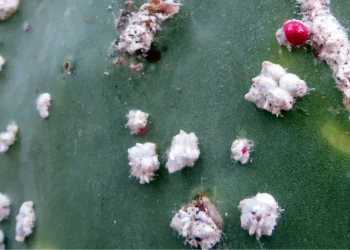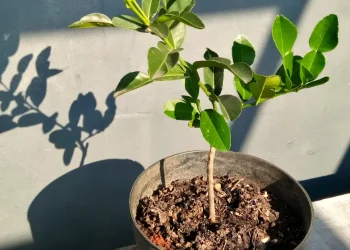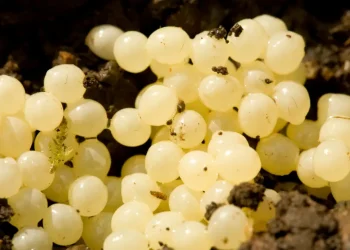As a cactus lover, there’s nothing quite like the satisfaction of watching your prickly friend grow and thrive. However, seeing orange or rusty spots on your cactus can be quite alarming. It’s as if your plant is trying to send you a message, but what could it be?
A few months ago, I noticed that my favorite cactus have developed some peculiar orange, rusty-looking spots. At first, I thought it was just a minor cosmetic issue, but as time went on, the spots began to spread, and the cactus looked unwell. I quickly realized that my plant is indeed sending me a message.
In this article, I want to discuss the most common causes of orange or rusty spots on cacti and provide you with practical solutions on how to treat each issue and prevent it from happening in the future. So grab your favorite gardening gloves, and let’s get to work! Your cactus will thank you for it.
Why is My Cactus turning Orange?
Unfortunately, there is not just one cause for this problem, and it depends on your specific situation. However, you can easily discover the cause.
Your cactus can be turning orange or catching rusty color mainly for three reasons. It’s either getting too much direct sunlight or you are not watering it right. If you are sure that your watering schedule is perfect and your cactus stays in the shade all year round, it’s likely caused by a pest infestation.
Additionally, as cacti age, their color may change naturally. And some species of cactus turn orange or red as they mature. So, in the end, the color change doesn’t have to be a warning message at all. But let’s take a closer look and see what we can do.
Sunburn
One of the most common causes of cacti turning orange is sunburn. Plants, just like us humans, can also get sunburnt.
Now, I know what you’re thinking, “How can a desert cactus get sunburnt when It’s not that hot here.” Well, it’s not that much about the temperature. The UV rays from the sun are the culprits that cause sunburn, not just the heat. That’s, by the way, why you should apply sunscreen all year round. In fact, a cactus can get sunburnt even on a relatively cool day.
Plus, when the temperature drops at night, the cactus may retain the heat from the sun, which can cause even more damage.
And when a cactus is exposed to direct sunlight for an extended period, the UV rays can penetrate its skin and cause damage. This damage manifests as orange, rusty spots on the plant’s surface. In some cases, the spots may even turn brown or black and become hard and crusty. If left untreated, the affected parts may start to wither and die.
Additionally, it’s also about the natural living habitat of the cacti. If it’s a type that lives in low light conditions, even a bit of direct sun rays can have devastating effects. Give it time to acclimatize by only slowly moving them out of its natural habitat.
Overwatering or Underwatering
As crazy as it sounds, both overwatering and underwatering can lead to orange or rusty spots on the cactus.
Too much water can cause the roots to rot and damage the plant’s ability to absorb nutrients, leading to these colorful spots.
On the other hand, underwatering can cause the cactus to become dehydrated and develop discolored patches. These discolored areas can even be orange, depending on the species.
When watering your cactus, it’s crucial to strike the right balance, and less is often more. And overwatering is one of the most frequent problems encountered by new succulent caretakers. The reason for this is that they water their cacti together with other plants. While watering a Lily two times a week might be just right, it could be too often for a cactus.
The right water balance is important not only for healthy and vital plants but also for optimal growth. If you’re interested in this topic, don’t forget to check out my other guide on how to get your succulent and cacti to grow bigger. It also provides valuable insights into watering habits.
Pest or Disease Infestation
If you are sure that you’re watering your plant right and that it’s not placed in direct sunlight, pests may be the reason for seeing orange or rusty spots on the cacti.
Just like any other plant, cacti are susceptible to various pests and diseases that can cause discoloration and damage to the plant’s tissue. Mealybugs and spider mites are two common pests that can infest cacti. The orange spots are caused by thousands of tiny punctures that these pests make in order to feed on the plant’s juice.
Similar discoloration can be also caused by fungal and bacterial infections.
In some cases, the spot may even spread and cover the entire plant, leading to its demise. That’s why it’s important to remove infected plants as soon as possible from others. Because the infestation can also spread to other plants in near proximity. Once you take the infested plant away, don’t forget to sterilize the soil, as it’s likely also infested.
Natural Aging
Although most cacti turn grey when old, some species may also turn orange as they mature. For instance, Mexican Lime Cactus, which develops an orange to bright red discoloration. Or Powder Puff Cactus, which is naturally covered in white, velvety hairs that, as it age, turn orange.
It doesn’t necessarily mean that the cactus will die soon. Cacti can live even for centuries. Take the oldest cactus as an example which is about 300 years old.
How to make your Cactus Healthy Again
If you notice that your cactus has turned orange or is displaying signs of discoloration, don’t panic just yet.
First, assess the cause of the discoloration. If the issue is due to sunburn, move the cactus to a shadier spot or create some form of shade to protect it from direct sunlight. Sunburn is typically tied to damage to the plant’s tissue. However, if you catch the issue early enough, you can minimize and prevent further issues.
Unfortunately, once a cactus or succulent is sunburned, the damaged tissue cannot be repaired, and the discoloration will remain. If the damage is severe, you can remove the affected arm using a sharp, clean knife or scissors. However, this can be risky and can lead to even more issues, and it should be done as a last resort. Cacti are really good at regeneration and asexual reproduction. And before you know it, the arm will be back.
If the issue is caused by over or underwatering, adjust the watering schedule to provide the cactus with the appropriate amount of moisture. If you have been overwatering your plant, make sure to drain the remaining water and, ideally, repot the plant to clean and dry soil.
Disease or pest infestation can be treated both naturally and with chemical insecticides. Unfortunately, bioproducts in this realm are not exactly working well. It’s better to reach for a proper product and get rid of the infestation quickly and once and for all.
And finally, in the case of natural aging, no one has yet developed a youth juice. Simply maintain good care practice, and your cactus can be thriving for decades,
Conclusion
The loss of vibrant green color is typically a warning message that something is wrong with your cactus, so don’t ignore it.
If you see orange or rusty spots on your cacti, act quickly. Remember to check your watering habits, keep an eye out for those pesky bugs, and give your cactus the love and care it deserves. Happy gardening!













